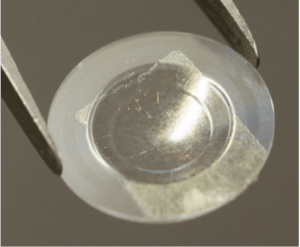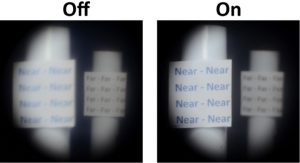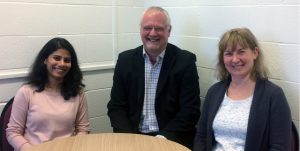by C. Jones (Leeds University, UK, j.c.jones@leeds.ac.uk)
The use of liquid crystals is well established in displays used in smart phones and large area TVs. During the Annual SoftComp Meeting 2016 in Ancona, a new academic team, having recently joined the Soft Matter Physics group at the University of Leeds, UK, was introduced to the community. Professors Cliff Jones, Helen Gleeson, and Dr. Mamatha Nagaraj say they made the move to Leeds because the group there is amongst the best in Europe. In Ancona Jones presented a selection of recent work on new liquid crystals and applications beyond conventional displays.
He described a new effect found in bent core liquid crystal compounds that form an optically isotropic dark conglomerate phase [1]. An electric field induces an optic axis parallel to the field direction so that the material appears to be isotropic in both ON and OFF states, but the refractive index is continuously lowered. Electrically tuneable refractive indices have enormous potential for switchable lenses and adaptive optics.





